This is about one of those plants you suddenly find in your garden.
When I found my first surprise-it-looks-like-a-tomato-plant vine in an obscure portion of our yard a couple of years ago, I left it to do its own thing, hoping to eventually identify it.
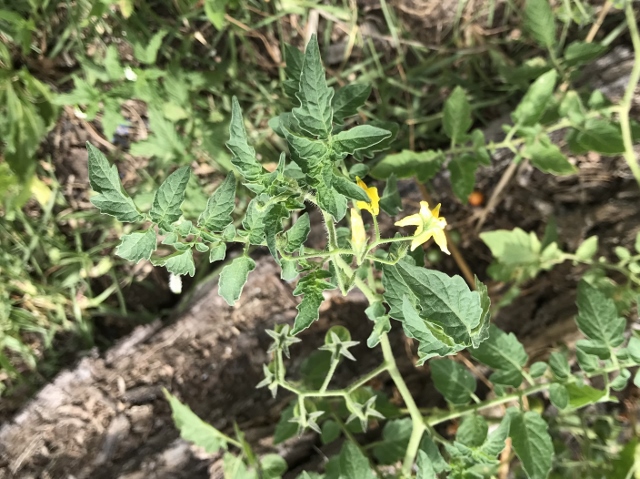
Yes, it looked like a tomato vine, smelled like a tomato vine and produced flowers that looked like those on cultivated tomato plants purchased from commercial nurseries.
As it turned out, it was a tomato plant. Tomato, Solanum lycopersicum, a member of the Solanaceae family. And more specifically, the rest of its identifying name: [Lycopersicon esculentum var. cerasiforme], provided by local authors, Dr. Albert Richardson and Ken King in their book, “Plants of Deep South Texas: A Field Guide to the Woody and Flowering Species,” page 401. The authors write that this is a species of tomato introduced from South America that has become naturalized in Cameron and Hidalgo counties.
Remember, naturalized plants are those that have become established in a region other than their place of origin, as opposed to native plants that have occurred naturally, without human introduction — and survived our diverse elements for at least one hundred years.
I generally wait until a mystery plant blooms before I keep or remove it. You never know, it might be something rare — or something you didn’t know you wanted.
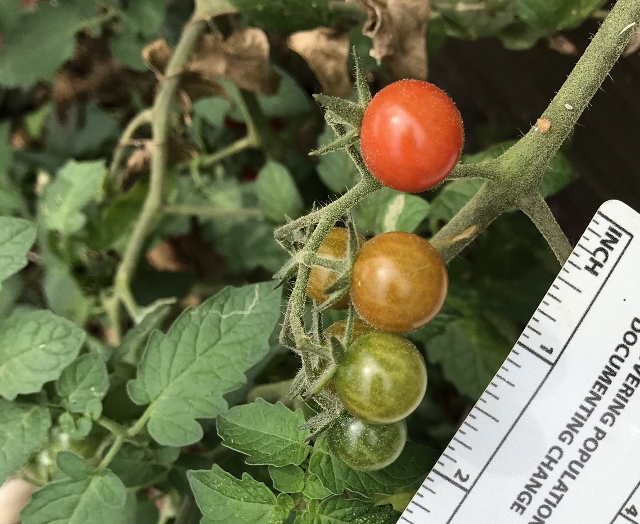
There was a somewhat subtle difference in the leaf/branch structure, and the shade of green was a little different on the pop-up vine. The plant seemed more spindly when compared to tomato plants purchased from a garden center. The branches popped off at the slightest touch when I moved the vine. The flowers were in delicate clumps, and the fruits, when they began to appear, hung like miniature green lanterns. Fairly quickly, the fruits grew to about the size of a marble and turned a bright — yes — tomato, red.
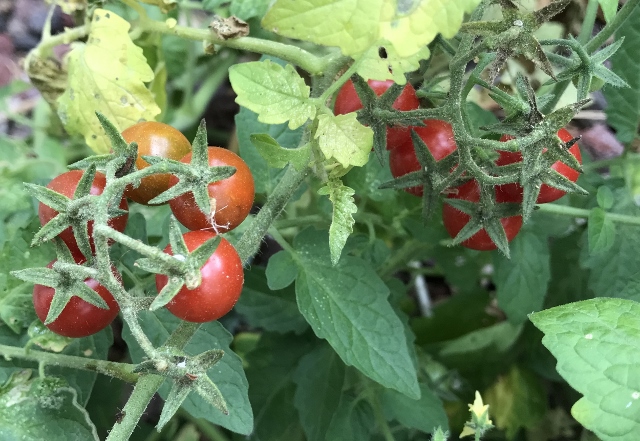
While the mystery plant was rapidly maturing during that year of discovery, we’d been invited to a fellow Texas Master Naturalist friend’s house for dinner. As an appetizer, our hostess had put out a variety of cheeses and a small bowl of tiny red tomatoes — just like those on my surprise vine. Native tomatoes, they called them.
So, the vines were a keeper, both for eating and to share with the birds. Nothing could be easier. The plant was completely maintenance free, growing without aid of human kind. They magically appeared, needed no water, and the fruits would split open on the vine and self-sow with total abandon.
Before I knew it, my surprise vine had taken over a large section of yard. I couldn’t tell where one vine stopped and another began. Some 40 yards away, more vines were climbing and crawling through the fence and over other plants.
The good news, like cultivated tomato plants, these vines have a very small root base and are easy to pull up. Also like normal tomato vines, they stain your hands and temporarily irritate your skin — gloves are recommended!
Authors Richardson and King caution that while this plant, other tomatoes, potatoes, eggplants, bell peppers and jalapenos, are edible members of the Solanaceae family, it must be remembered that the deadly nightshade is in this same family. In addition, the foliage of Lycopersicon esculentum, is poisonous to eat, according to information in the book, “Edible and Useful Plants of the Southwest,” by Delena Tull.
Each year now, we have tomato vines coming up in various parts of the yard. I selectively leave some because who doesn’t like free and easy bird food, right? The vines are easy to curtail, when needed.
One uninvited plant not as polite as the wild tomato, and more than a little annoying, is Bermuda grass. The root nodes might just barely dip into the soil, but the roots jetting out from those nodes are tenacious little buggers that dig deep into the earth and hang on like a cat clinging to a tree trunk.
I have recent experience with this pesky plant — for the second time in less than 15 months. Let me back up.
During this time when we’re cautioned to consider social distancing, our sister chapter’s 2nd Vice President, Elizabeth Perdomo, listed on FaceBook a lot of activities that their chapter members can do during this time when so many activities, classes, lectures, programs, events and field trips are being cancelled.
Several of us have added ideas to Elizabeth’s initial FB list. Incidentally, we’ve compiled that information for the quarterly newsletter, the Chachalaca, so be sure to look for that when it’s published on our chapter websites March 31. The South Texas Border Chapter’s webmaster has an abbreviated version on their website’s blog: https://www.stbctmn.org/blog . When considering activities on the lists, personal discretion should rule, of course, as events evolve and revised directives are issued.
Thinking hard about some solitary activities, as Elizabeth’s list suggested, I took her advice: now being a good time to work in my own garden.
My poor butterfly-garden-on-the-slope had slowly re-Bermuda’d itself over the past seven months — while I pretended it wasn’t happening. Digging out that Bermuda grass is the activity I chose..
Beginning at just after daybreak, I grabbed a shovel and began the chore in a corner of the garden. The sky was overcast, the temperature pleasant and the breeze ever so gentle. The soil wasn’t rock-solid like in other drought-affected areas of the yard. There was no stopping place so I continued on until I stopped for breakfast three hours later.
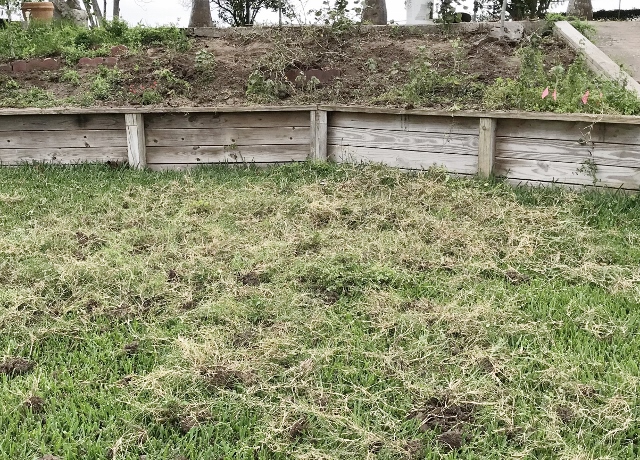
I’d uncovered plants I’d been feeling sorry for while the grass overpowered them. I uncovered a couple of plants I’d forgotten were even there. I accidentally sacrificed a few delicate Snapdragon vines (PDST page 387) but have plenty left. I freed up a good number of third generation Jann Miller Mauve Indian Mallow plants (PDST page 303) and discovered about a dozen Mexican Caesalpinia (PDST page 232) seedlings that can be potted up — on another day.
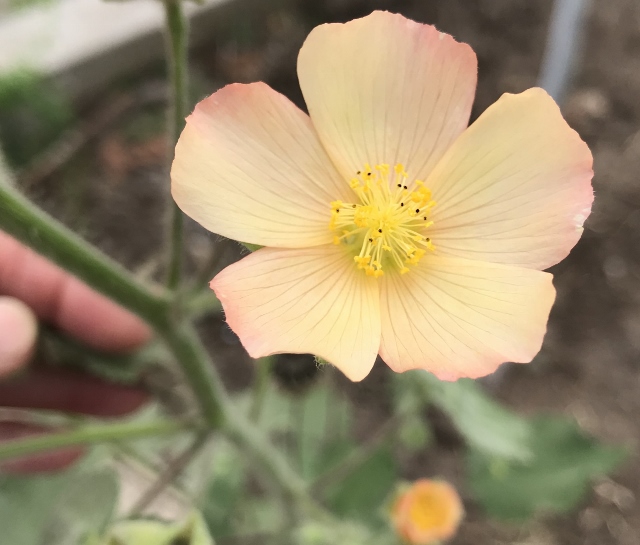
You may think the plot looks a bit pitiful, but as I type this missive, San Benito is experiencing somewhat of a rain fest. While not exactly pouring down, the rain is splashing from the roof loud enough to make noise as it falls on the parched ground beneath.
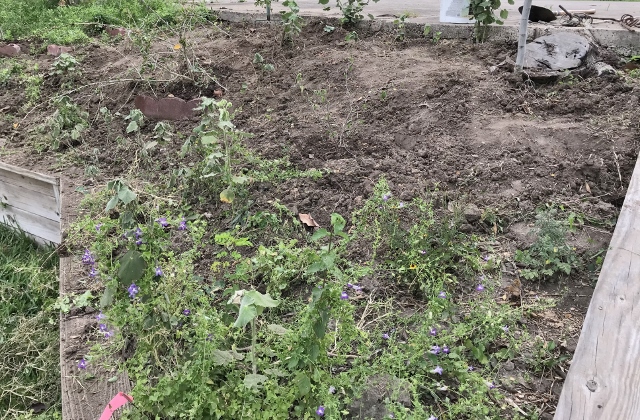
Let us hear from you and tell us the projects you’ve tackled — it might just be the encouragement we need to tackle tasks we’ve been putting off or forgotten about!